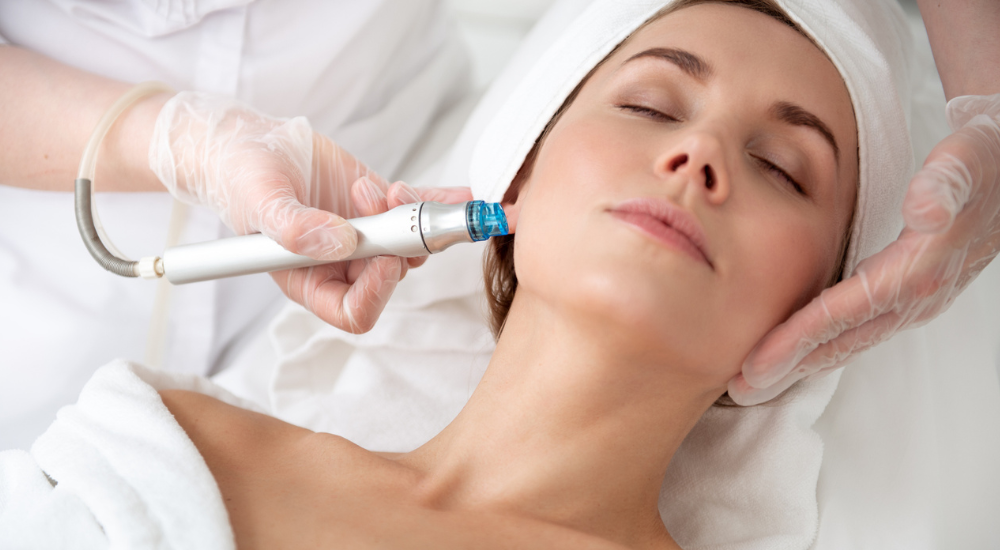At-home skincare devices have been on the rise since the beginning of 2020. Thousands of Australians have elected to take the health of their skin into their own hands and try their luck with skin devices purchased on the internet — but many remain unaware of the risks that come with such a gamble. Shania O’Brien investigates.
Impacts of the pandemic
People do not like to be reminded of it, but the pandemic has permanently changed the way people live their lives. This change goes far beyond wearing masks and owning an endless supply of disinfectant; this change has seeped into the way millions buy their makeup, eat their food, spend their time online, and most relevantly: take care of their skin.
COVID-19 had a significantly negative impact on the industry; repeated lockdowns disrupted the supply chain, non-COVID treatments were suspended or postponed, and aesthetic treatments took a backseat to other elective surgery.
Australian salons and clinics have suffered two-fold in 2022, with extreme weather events causing further delays in salon and skin equipment, and beauty products.
Because the market was not expected to bounce back until mid-2023 at the earliest, thousands of people decided to take matters into their own hands and invest in at-home skincare devices.
The future of the skin devices market is expected to bank on key technological advancements in the global healthcare industry such as the introduction of LED therapy devices, AI-enabled gadgets, microneedling tools, and microdermabrasion instruments among countless others.
At-home skincare devices market
In fact, the fall in in-salon treatments have thousands of experts concerned about the state of their clients’ skin — and the measures they’ve begun taking to mask it. “There is definitely an increase in interest in Do-It-Yourself and at home treatments due to the pandemic limiting access to professional services,” said professional makeup artist Tess Williams. “As a result, I’ve found many of my clients asking for … unusually heavy makeup to mask at-home device disasters. And while makeup can work wonders, there is still a larger problem to deal with once the foundation comes off. While at-home devices can save time and money, the average person is not familiar with how to properly use them — and besides, the best results always come from professional services provided by those who have trained extensively in skincare.”
Dangers of misusing skincare devices
And even then, using home-use devices have the potential to cause more damage than they claim to repair, especially when it comes to devices like high-intensity lasers. “Improper use of lasers may cause epidermal burning or injury to the skin’s surface, which will then need to be addressed by a professional anyway,” said Nadia Radi, the Head Dermal Therapist at Contour Clinics in Five Dock, Sydney.
In some serious instances, the damage cannot be completely undone. “Treating such mistakes can be extremely time- consuming and costly,” added Radi. She also spoke about a problem most people do not consider — which is treating the new skin issue takes time away from dealing with the initial skin concern. “[Attempting to correct a client’s at-home mistakes] can also cause delays in the treatment of their initial skin concern.”

Importance of industry professionals
And additionally, Radi did not understand the fanfare surrounding some at-home skin devices, and was a keen advocate for professional-use devices persisting in the beauty industry. “Often, some of the home-use devices will not deliver the same result as a medical-grade laser or high-end skin technology. The use of professional equipment also comes with the knowledge and skills of a professional skin expert.”
Another significant problem is the lack of training people receive when they choose to care for their skin themselves. “Being educated about a device is so important before it’s used — and most individuals unfortunately do not have that luxury when they simply order skin devices off of the internet.”
Even still, at-home devices are mild versions of most in-salon devices. While it can be great for maintaining results it is impossible for users to receive anywhere close to the same result as they would when trusting a professional in a safe environment. Skin clinicians have repeatedly argued that the most a person should be using at home is a 0.3mm derma roller that aids in the deeper penetration of product into one’s skin; but even then, derma rollers need to be thoroughly disinfected before and after each use and cannot be used on skin with cuts or abrasions, active acne, or any other skin condition that causes a predisposition to injury or infection.
Intervention of the TGA
In fact, the Therapeutic Goods Administration (TGA) cancelled an electronic microneedling device on 4 November 2019 and warned Australians against undergoing procedures using unapproved medical devices. The product was not proven to be sufficiently safe or effective for use. “Microneedling is a procedure where small needles embedded in a device puncture or scrape the skin. It is believed to treat skin conditions such as acne scars by promoting the release of collagen … but the risks of microneedling include skin redness, ultraviolet (UV) sensitivity after the procedure, and in some cases there is a risk of scarring or infection,” revealed an official from the TGA in a statement. “The risk is much greater if microneedling is done without the supervision of a health professional or with inadequate hygiene controls.”
A leading cosmetic industry CEO, Dr Vivek Eranki of Cosmetique Cosmetic Clinics, especially warned patrons of falling into the trap of DIY non-injectible fillers. Cosmetique presently have seventeen clinics across Australia and are highly respected in the community for their professional services and diligent approach to health and safety.
Advice for those considering at-home skincare devices
Dr Eranki was surprised by the marketing push for consumers to buy such products online, which are largely created overseas by unlicensed and unregulated manufacturers. “They use influencers
and other types of clever promotional techniques to lure unsuspecting people into buying these products, but they are not safe and should not be used.”
“My strong advice to consumers is to avoid purchasing or using needle-free devices such as hyaluron pens or other similar products for injection of hyaluronic acid or other lip and facial injectibles,” said Dr Eranki. “These products are unsafe and could cause serious complications. We are seeing a rise in the number of people purchasing these DIY products online from overseas and attempting to use them at home. They are extremely dangerous and should be thrown in the bin.”
Why devices purchased over the internet are dangerous
“An increasing number of people are seeking treatments to smooth smile lines and crow’s feet and plump up their lips and cheeks — but they are buying them online to use at home themselves,” said Dr Eranki. He revealed that such a phenomenon is occurring due to the misconception that needle-free devices are safe to use. “Hyaluron pens use extremely high pressure to penetrate the skin and do not provide enough control over where the filler is placed, which then results in serious harm to the skin, lips, and even a person’s eyes. An additional issue is the poor quality of the filler itself — which often contains silicone that tends to move around the body and cause long-term pain, infection, permanent scarring, and disfigurement.”
Devices that claim to provide professional services, such as smoothing fine lines or plumping lips, should not be sold directly to the public because of the potential for disaster. All kinds of injectibles need to strictly only be administered by professionals in a clinic that undergoes medical-grade cleansing and disinfection.
Several professionals have warned that should a person accidentally self-administer injectables or dangerous at-home skincare devices, it is important for them to go to the emergency room immediately.
“The risk is just too high,” said Dr Eranki. “Even if you are lucky and do not immediately notice any issues, it does not mean that potential permanent damage isn’t just around the corner.”
This article originally appeared in the September-October 2022 print issue of Professional Beauty.
Read the current issue of our digital magazine here:
- For more news and updates, subscribe to our weekly newsletter
- Follow us on Instagram
- Like us on Facebook
- Join Australia’s largest network of beauty industry professionals on LinkedIn
- Subscribe to our print magazine
Have an idea for a story or want to see a topic covered on our site and in our pages? Get in touch at info@professionalbeauty.com.au.

